How to Recognize Fake, Low-Quality, and Genuine Leather?
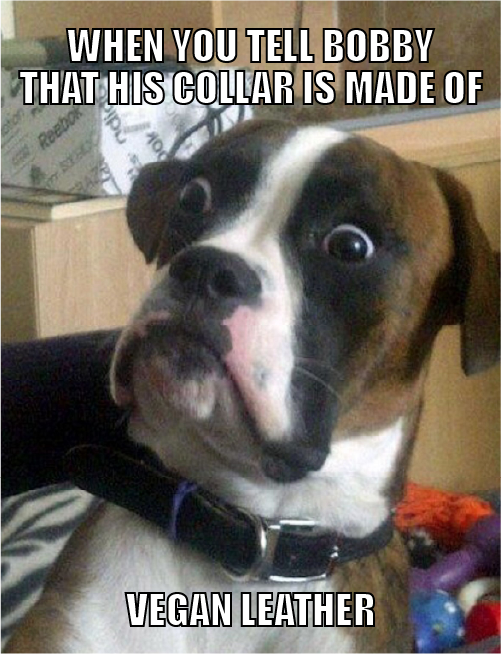
WHAAT?
What is the difference between eco-leather (or vegan leather), genuine leather, and synthetic leather? How can you distinguish eco-leather from real leather? Today, we will clarify your doubts once and for all and teach you some tricks to distinguish genuine leather from synthetic leather.
It's time to learn to recognize genuine leather from synthetic leather and understand the difference between the two.
Let's say that at first glance, it's not so easy to understand if what we have in front of us is made of real leather or not because aesthetically (to the human eye), it can be very, very similar. However, what really changes is the quality, mechanical resistance (for example, thanks to the structure of animal fibers, leather is a flexible product that lasts for years without damage), fire resistance, durability, breathability, and its enormous value (enormous value? Yes! Because real leather is hardly worked mechanically alone, and as we will see later, human intervention is needed to work it).
Important Note: "In this article, we will not discuss eco-leather because eco-leather is genuine leather of animal origin and should not be confused with artificial leather."
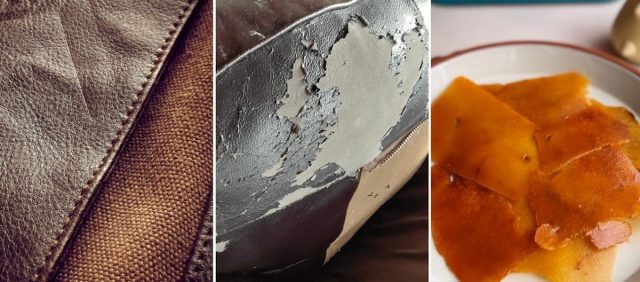
Types of Leather: the Pretty, the Ugly, and the Rich
How to Recognize Real Leather?
Let's start with a series of simple and effective tips to distinguish real leather from fake, whether it's a jacket, a sofa, a pair of shoes, or any other item.
1.- The Passage of Time
In the lower photo, on the right side, you can see a fake leather notebook cover that has already started to lose its seams and reflects a layer of white thread fiber beneath the first layer with a bit of use. Meanwhile, on the left side, we have an image of a bag with several years of use. Despite continuous use, the quality remains intact, and the only thing it has lost is the color, but the material is still as good as new.

A picture is worth a thousand words...
2.- The "Fleshy" Side of Leather
Leather has two sides, one generally called the grain side (outer side) and the other is the inner or "fleshy side." This latter side can help us understand if it's real leather or not since, in 70% of cases, the fleshy side in fake leather is not replicated (probably due to additional costs) and is replaced by a mesh fabric (as shown in the previous image).
When you feel the texture of the 'fleshy side,' try to find a spot where the thickness of the leather is visible and examine it closely. If you notice some fabric filaments (like gauze), then it's fake or synthetic leather (look at the zoomed-in photo below that better illustrates this characteristic of fake leathers).

Therefore, when you buy a leather item, look carefully and find a part (no matter how small) where you can see the 'B side' of the leather. If it's similar to suede and doesn't have protruding filaments, then it's real leather; otherwise, my friend, you would be purchasing an item made of synthetic material.
3.- The Unmistakable Smell of Genuine Leather
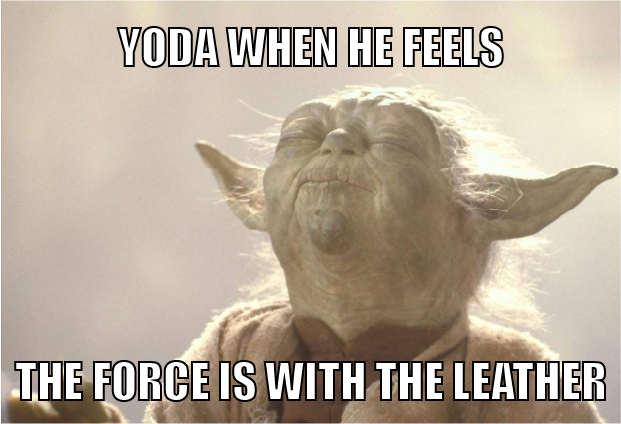
Follow your nose! Genuine leather has a distinctive and unmistakable smell that is quite strong. Difficult to explain in words, but rest assured that if you have just one new item of genuine leather at home, anyone entering your room will know it by the scent.
If you have two items, one in real leather and the other in synthetic leather, smell them, and you'll immediately notice the difference. Real leather (despite the passage of time) retains an unmistakable aroma; fake leather will smell like nothing (at best) or may emit a smell of gasoline or asphalt tar.
4.- The Fire Test on Leather
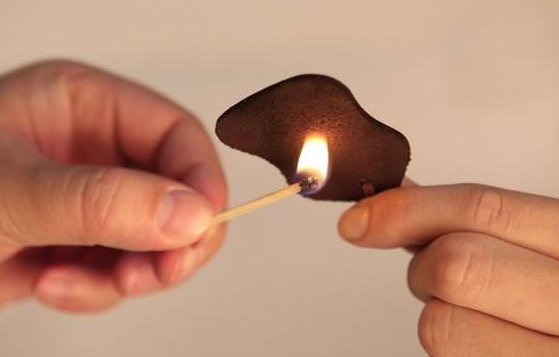
If you ignite a lighter or match and let it rest for about twenty seconds on the surface of a fake leather object, you'll see it start to 'boil,' releasing a strong smell of burnt rubber or plastic.
On the other hand, if you repeat the same experiment on a piece of real leather, you'll see that it doesn't 'boil' but wrinkles a bit and changes color. Although it will release a particular odor, it won't be a smell of burnt plastic or petroleum.
5.- The Water Test on Leather
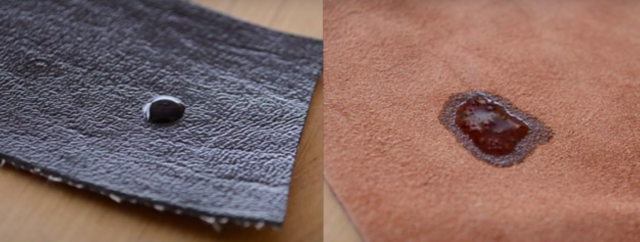
The difference in water absorption between fake and real leather
In this test, you can drop a few water droplets on a leather surface and let them sit for about thirty seconds, but keep in mind:
The water test needs to be done with close observation. While it's true that one of the characteristics of genuine leather is water absorption without altering the fiber structure (and thus without damage), it's also true that in daily use, leather often comes into contact with water (such as in the rain with a real leather jacket). Therefore, real leather is often treated in the tanning process to make it water repellent.
If, on the other hand, you've purchased a suede leather item like a jacket or a pair of shoes, you can check whether it's genuine leather with the water test, where real leather will begin to absorb water in a few seconds.
Looking for Genuine Leather Apparel and Custom Leather Accessories?
At Qiwa, we develop premium leather products of the highest quality, with our brand and various designer brands, supporting various entrepreneurial projects.
Learn more about our history here and our product catalog here. We also invite you to contact us directly here.
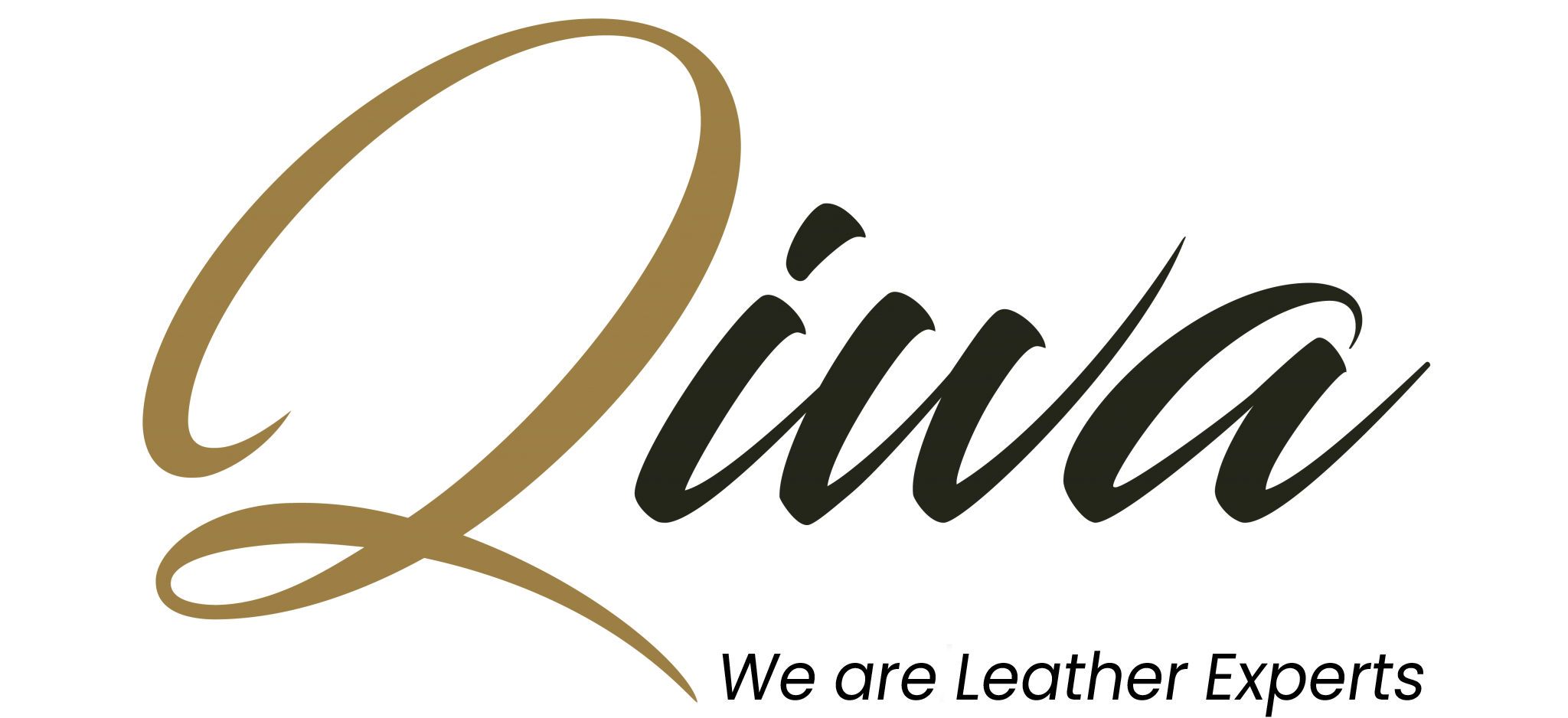
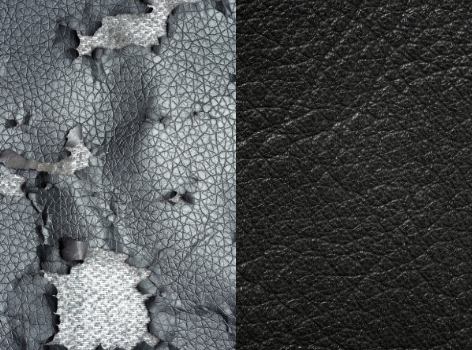
2 Replies to “
¿Cómo reconocer el Cuero Falso, de Baja Calidad y el verdadero?
”Manuel
04/04/2023 at 12:34 pm
¡Excelente post! es muy importante conocer cada uno de estos tips para poder tener un cuero de calidad en nuestras prendas. Es por ello que en Curtidos Menacho nos aseguramos de ofrecer y garantizar cuero de calidad para fabricantes industriales o artesanales, les invito ver nuestro catalogo por esta pagina https://curtidosmenacho.com/archivos-pdf/CATALOGO2019WEB.pdf
cueros de calidad
05/07/2023 at 12:21 pm
El cuero real es naturalmente transpirable, por lo que no se calienta y sudoroso como el cuero sintético. También es más duradero, por lo que puede soportar más desgaste sin romperse. Y, por supuesto, el cuero real se ve y se siente mejor que el cuero sintético. Si desean fabricar sus propios articulos en cuero les recomiendo Curtidos Menacho una tiienda mayorista en cuero español de Ubrique, tienen buenos precios y son de gran calidad.